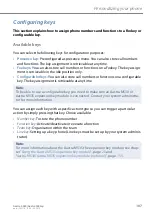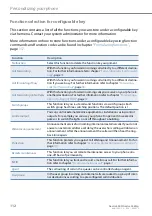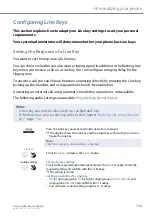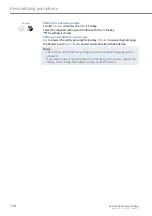
Operator phone
Aastra 5380/Aastra 5380ip
121
eud-1282/1.3 – R3.0 – 04.2013
Personal key
Once your system administrator has configured your phone as operator phone, your
Personal key is also configured.
The Personal key allows the operator phone to act as an ordinary user. In other words,
you can use this key to make personal calls. Incoming calls to your personal phone
number are routed to the Personal key. The position of this key can freely be chosen
by your system administrator.
Calls to the Personal key always have the highest priority. If there are calls simultane-
ously on a line key and the Personal key, picking up the handset automatically
answers the call to the Personal key. To answer the call to the Line key instead, you
need to press the Line key.
While you are making a call on a Line key, you cannot be reached on your personal
phone number and callers obtain the busy tone.
Queue
With an operator phone several calls can be received at the same time without it
being "busy". However, the operator phone user can only process one call at a time. If
all your Line keys are busy, all further calls are routed to a queue and listed on the dis-
play.
The operator phone can handle up to ten calls simultaneously via its keys; however,
there may well be more calls waiting in the queue. A call is put through to a Line key
as soon as the line key becomes free.
Depending on the system configuration, the callers receive the information about
their actual position in the call queue.
Contact your system administrator for more
information.
Display, display symbols and LED
The LED next to the Line keys and the Personal key indicate the origin and status of a
call. If a 2-company system was configured, the display shows whether the call is
intended for company A or B (see chapter
"Making calls to a two-company system"
).
A red LED signals an external call; a green LED, an internal call.
















































